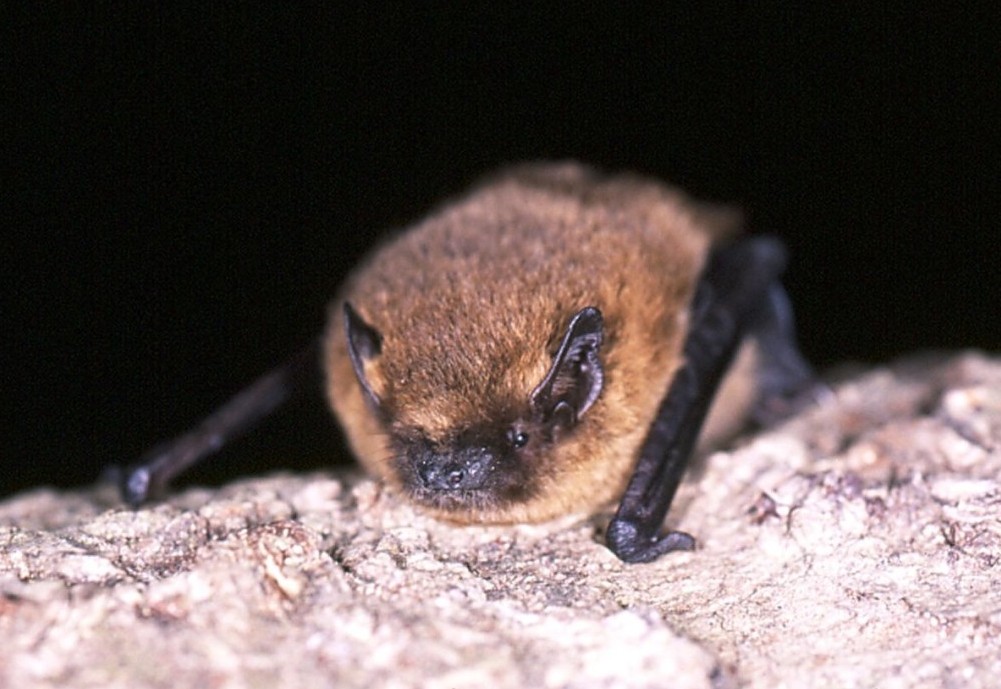Common and Soprano pipistrelles

Status
Native; common and widespread
Population
3,040,000 (common pipistrelle; 4,670,000 (soprano pipistrelle)
Scientific name
Pipistrellus pipistrellus and Pipistrellus pygmaeus
Pipistrelles were only recognised (by differences in the frequency of their calls) as two separate species in 1999. They are nearly identical in appearance and behaviour, although soprano pipistrelles are slightly smaller. Differences in range, habitat use and diet have also recently been found.
Pipistrelles are amongst the smallest mammals in Britain, weighing about the same as a twenty pence coin. They usually have dark brown fur and a slightly paler underside, and emerge about 20 minutes after sunset, flying quickly just above head-height in pursuit of small, flying insects. In a single night, they can eat up to 3,000 prey and travel up to five kilometres.
Wingspan: 19 – 26cm
Weight: 3 – 7g
Lifespan: The maximum recorded age is 16 years
Reproduction
Mating occurs in autumn and females gather to form maternity roosts the following spring. A single pup, or occasionally twins, is born between early June and mid-July.
Diet
Midges, small flies, mosquitoes, lacewings and small moths, are caught in the air
Summer roosts
Most often modern houses, in tight spaces beneath tiles, under roofing felt or in cracks in the walls, but also trees and bat boxes
Winter roosts
Generally in small crevices in buildings, trees or bat boxes, but are rarely found in caves
Habitat
Open woodland, farmland and suburban gardens; they often feed over water and along woodland edges and hedgerows. Soprano pipistrelles prefer to forage in habitats associated with water, such as lakes and riparian woodland, and may be more specialist feeders than common pipistrelles.
Predators
Domestic cats, especially in urban areas
Threats
Susceptible to insecticides and chemicals used to treat roof timbers
Ultrasound
Echolocation calls from P. pipistrellus tail off at around 45kHz and those of P. pygmaeus at around 55kHz, with little overlap between the two populations. The two species also differ in their social calls.
Status and conservation
GB Red List: Least Concern (LC).
Population and distribution
3,040,000 (common pipistrelle; 4,670,000 (soprano pipistrelle). Populations have declined by about 55% since the 1960s but more recently (from 1998) common pipistrelles have increased and soprano pipistrelles have remained stable. Pipistrelles are widely distributed across the country but may be absent, or only rarely present, on some of the Scottish islands.
Did you know?
In some studies of captive soprano pipistrelles, pups have been suckled by females other than their mother, but it is not known whether such wet-nursing occurs in maternity roosts in the wild.
